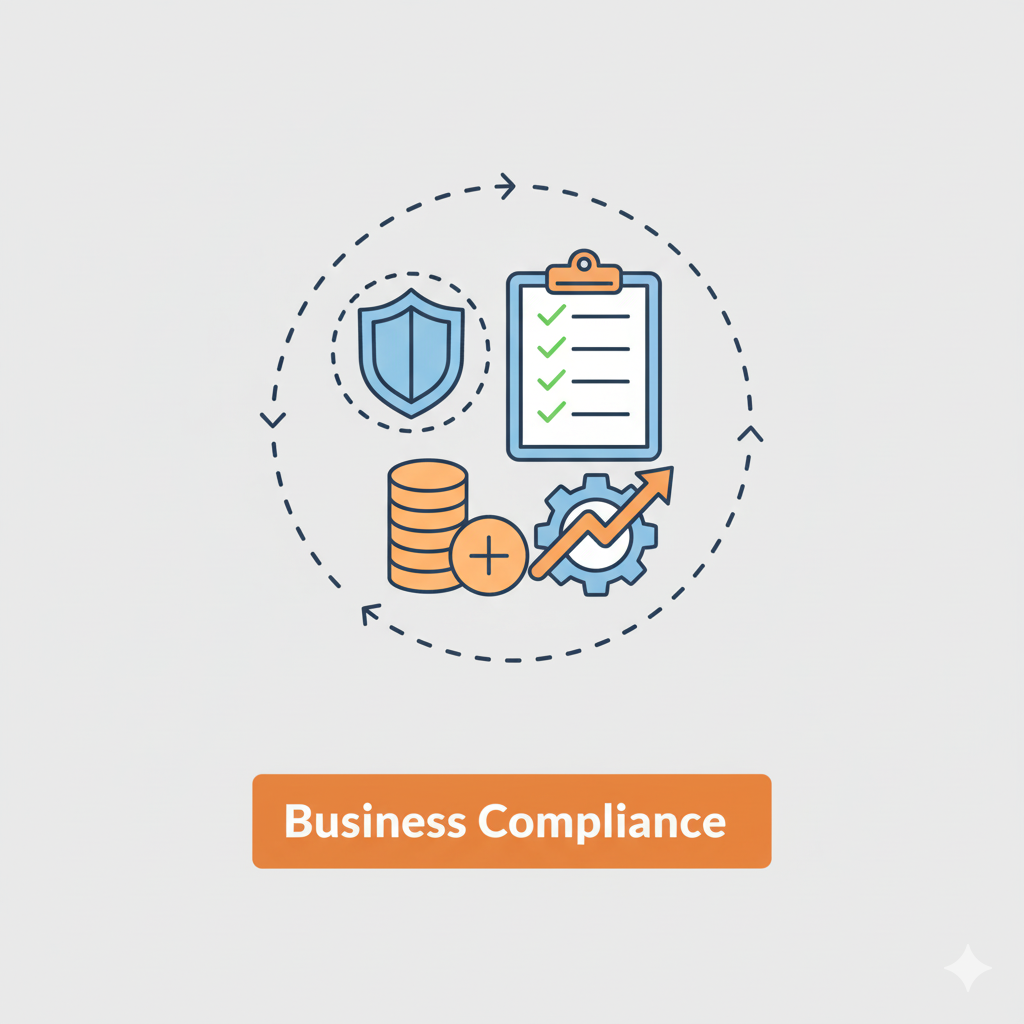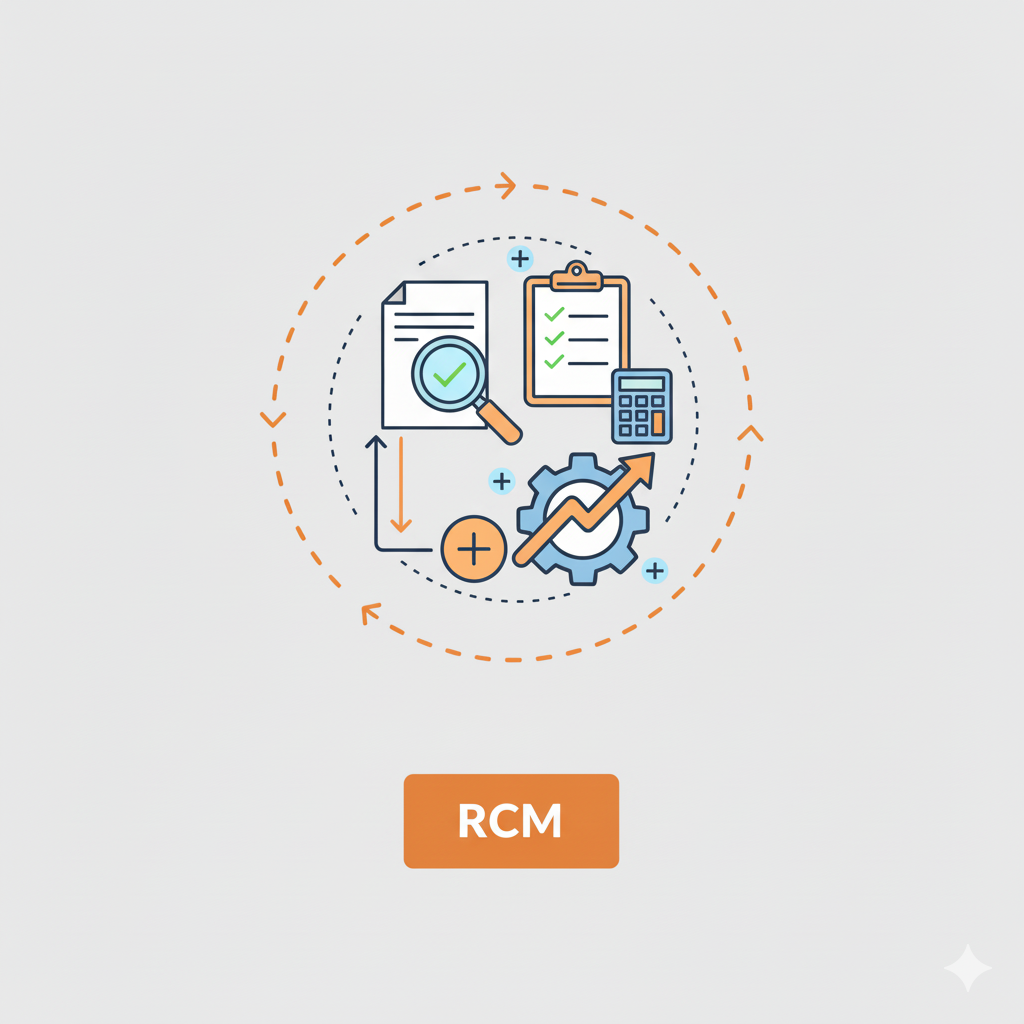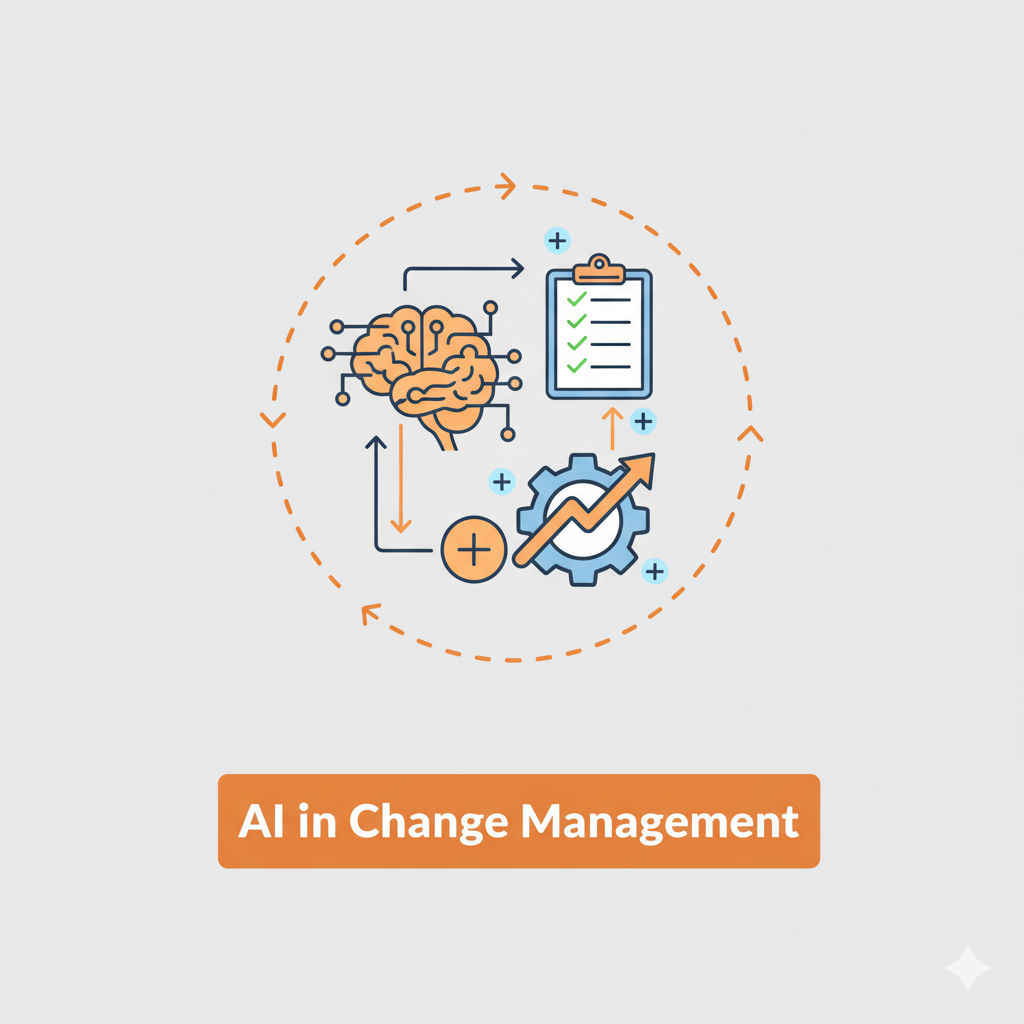Choose intelligence you can govern. By now you’ve seen what AI can add to change management and how it actually works in day-to-day flows. The last step is the decision: will this make your organization faster, safer, and more auditable—and will it do so in a way you can own? This page gives you a rigorous way to evaluate AI for change, maps the questions each stakeholder will ask, and shows how Serviceaide meets the bar without demanding a painful platform swap. The goal isn’t a glossier ticket form. It’s a calmer operating rhythm where policy decides the routine, people decide the tricky, pipelines enforce timing, and proof assembles itself.
The five pillars that should decide your buy
Governance. AI has to strengthen your controls, not bypass them. That means explainable recommendations, human-in-the-loop approvals by default, segregation-of-duties enforcement, versioned policies, and a traceable chain that shows what the system knew when it suggested a route or risk score. If an auditor asks “why was this medium-risk?” you should be able to point to factors, not vibes.
Security & Privacy. Your data, your residency, your access model. An enterprise-ready system supports SSO/SAML, granular roles, audit logging, and choices in hosting—from SaaS to private cloud to on-prem. Prompts and responses should be logged and retrievable. Sensitive fields should be maskable or excluded from model inputs. If you operate under HIPAA/SOX/NERC/PCI constraints, AI must live within those boundaries, not outside them.
Integration. Change is the crossroads of ITSM, DevOps, security, and compliance. The winning platform plugs into service desk, CMDB/discovery, CI/CD, observability, and SIEM without turning into a fragile science project. Approvals should be verifiable from pipelines. CMDB links should be first-class, not attachments. Evidence should stream in from systems of record, not be pasted in by humans.
Outcomes & ROI. You’re not buying novelty. You’re buying reductions in time-to-authorization, emergency change percentage, audit prep hours, and failed deployments—without upticks in incidents. A serious vendor will propose a pilot that tests these outcomes on your turf, with your data, in weeks—not quarters.
Operability. Can you run it day-to-day without full-time wrangling? Policies should be readable; templates editable; recommendations tunable; updates non-disruptive. Overlay mode should let you keep existing tickets and tools while AI handles intake, risk, routing, and evidence.
What “responsible AI” means in change—beyond the slogan
Responsible AI is a design constraint, not a marketing paragraph. At minimum, you should expect: clear explanations for every recommendation (“risk elevated due to Tier-1 service, PII, failure pattern in Q3, overlapping with EU peak window”), visible inputs and their sources, and the ability to pin or override those factors by policy. Human-in-the-loop must be default: AI can propose, draft, and summarize; policy and people approve. Prompts should be templated so only allowed fields flow into the model; personally identifiable or sensitive values can be masked. Every suggestion needs a cryptographic timestamp and a version reference so you can prove what was in play when a decision was made. Finally, hosting should match your posture: multi-tenant SaaS for speed, private cloud for control, or on-prem for strict regimes, with identical governance semantics across modes.
Serviceaide implements responsible AI as guardrails you can see and audit. Recommendations come with rationales, not mysteries. Approvals cannot be spoofed or implied by the model. Segregation of duties is enforced in the engine. And you decide where the model lives.
The architecture that makes speed and control coexist
Think of the platform as a fabric that threads through your existing stack rather than a monolith that replaces it. Intake is where AI first adds value: classifying requests, linking services and configuration items, and drafting the risk rationale you’d expect a careful reviewer to write. Policy is the conductor; it decides route and evidence requirements. The pipeline is the gate; it checks that approvals match current risk at the moment of deployment. Observability and tests are the eyes; they confirm success and push results back into the record. The CMDB is the memory; it snapshots configuration around the change so impact isn’t guesswork and drift becomes visible.
[Work Items/Requests] → AI Intake & Classification → Policy (risk/route/artifacts)
↓ ↓ ↓
CMDB/Discovery ← CI links & deps ← Evidence requirements → CAB (only when needed)
↓ ↓ ↓
Pipelines ← Change Gate verifies approvals at deploy → Observability/Test results
↓
Immutable Evidence Store (approvals, logs, tests, metrics, CMDB snapshots, PIR)
In Serviceaide, each of these handshakes is native. You can adopt them one by one: start with intake and risk rationales while keeping your ticket tool; add the pipeline gate in advisory mode; switch to blocking once policy is trusted; expand to more services as stakeholders see fewer surprises and stronger proof.
Overlay, don’t uproot: a migration that doesn’t stall delivery
Ripping out tools to “adopt AI” is a tell you’re talking to the wrong vendor. A safer, faster path is overlay:
- Pilot scope. Pick a Tier-2 service with steady change volume and clear ownership.
- Intake first. Turn on AI classification and risk rationales; keep existing approvals and CAB.
- Advisory gate. Add a non-blocking pipeline check that reports whether approvals match policy.
- Blocking gate. Flip to blocking once you’ve seen two weeks of clean runs, with an emergency bypass tied to E-CAB.
- Evidence streaming. Wire logs, tests, and health signals to auto-attach to the record.
- Scale. Expand to sister services; promote recurring fixes to standard changes; trim unnecessary CAB.
Because Serviceaide can act as a stand-alone change brain or sit on top of what you have, your migration is measured in flow improvements, not tickets re-keyed.
Stakeholder lenses: answer the “yes, but…” before they ask
DevOps & Engineering. They’ll worry about friction. Show them that approvals become verifiable conditions in pipelines, not extra forms; failures explain themselves (“missing service_owner approval for risk=12”); and logs/tests attach automatically so nobody screenshots Grafana at midnight. The win is fewer meetings and more predictable deploys.
Security. They’ll ask about data handling and model boundaries. Demonstrate prompt templating, field-level masking, on-prem or private-cloud options, and SoD enforcement in policy. Show how high-risk routes demand security co-signs and how those approvals are immutably recorded.
Compliance & Audit. They’ll want proof that the chain of evidence is complete: requestor and approvers, risk method, CAB decisions with timestamps, implementation/backout steps, validation results, and retention. Walk them through a closed change and let them follow the breadcrumbs without a tour guide.
Change Managers. They’ll care about consistency. AI doesn’t replace their judgment; it gives them the brief they wish humans always brought to CAB: impact diffs, conflicts, dependencies, and go/no-go conditions. Policy becomes the single source of who approves what.
Executives. They’ll need the business case. Bring metrics: median time-to-authorization for low/medium risk down; emergency percentage trending down; success rate up; audit prep time collapsing from weeks to hours because proof accumulates continuously. The benefit isn’t just speed; it’s fewer surprises.
What to actually test before you sign
Decision pages often drown in features; pilots should focus on outcomes. Run a four-week, two-phase test:
- Phase 1 (Advisory). Enable AI intake and risk rationales for one service; enable a non-blocking deploy gate. Track baseline: authorization time by risk band, emergency percentage, incident correlation, and audit “rework” hours.
- Phase 2 (Enforced). Flip the gate to blocking; reserve CAB for high-risk only; add a minimal standard change catalog. Track the same metrics and compare.
Ask yourself three blunt questions at the end:
- Did medium-risk approvals get materially faster without increasing incidents?
- Did emergency changes shrink and success rate improve?
- Can a new auditor understand a closed change in under five minutes?
If the answer isn’t yes, the vendor should adjust policy templates and prompts until it is. If they can’t, that tells you everything.
A concrete before/after narrative you can replay with your team
Before. A medium-risk database parameter change lived three days in chat while owners triangulated which cluster was in scope. CAB spent twenty minutes reconstructing impact and arguing about the window. Deployment paused when someone noticed a blackout; evidence scattered across wiki pages and screenshots. Two weeks later an auditor asked for the chain of approvals and six people spent a morning assembling it.
After with Serviceaide. Intake linked the change to the right CIs at creation, pulled similar changes and outcomes, drafted a risk rationale, flagged the blackout conflict, and proposed go/no-go conditions. A two-paragraph virtual CAB brief appeared automatically; approvals landed the same afternoon. The pipeline verified them at deploy time; logs and tests streamed back into the record; the validation summary wrote itself. When audit asked, the record opened; the story was already there.
The work didn’t become less technical. It became less chaotic.
Comparison guide (read as a narrative, not a checklist)
Ticket-centric tools can collect approvals but struggle to enforce timing in pipelines or explain why a risk was high beyond “because we said so.” Heavy ITSM suites can, with enough customization, approach the same outcomes, but the path is longer and the footprint larger. Serviceaide was built for the intersection of AI, policy, and evidence in change. Policy-based routing is first-class. Change gates are native. Evidence is a stream, not an upload. Overlay mode is intentional. Time-to-value is measured in weeks with a pilot that keeps your existing tools in place. Total cost of ownership remains focused on where value is created: approvals that happen at the right time and proof that assembles itself.
Operating the platform after go-live
Sustainable programs rely on clarity and cadence. Keep policies readable and versioned; review standard change models quarterly; watch trend lines rather than single incidents; invite security and audit to a monthly “change health” session where you look at emergency rate, authorization lead time, and evidence completeness together. Serviceaide’s admin surface is built for this cadence: policies and templates you can edit in minutes, gates you can test in staging, and dashboards that highlight trend shifts before they become firefights.
Why Serviceaide for AI in change
Because it’s AI that strengthens control rather than sidestepping it. Intake becomes structured; risk scoring is explainable and aligned with your policy; CAB gets the context it needs and none it doesn’t; pipelines enforce approvals at the exact moment they matter; and every artifact—approvals, logs, tests, CMDB snapshots, PIR—lands in an immutable evidence store without chasing humans. You can run it as your primary change system, or lay it over your current stack and centralize the brain of change while tickets, incidents, and problems continue in the tools teams already love. Deployment options match your posture. Guardrails match your regulators. And the path to value is a measured pilot, not a big-bang migration.
Ready to make the call? Here’s a no-drama pilot plan
Bring one service. Bring one messy change from last quarter. We’ll map it forward in Serviceaide and show, side by side, how the AI would have classified it, how the risk rationale and CAB brief would have read, how the pipeline gate would have responded, and what the validation summary would say today. Then we’ll run a four-week pilot with advisory gates in week one, blocking gates by week two, and a results readout in week four—authorization time, emergency percentage, success rate, and audit readability. If the curve doesn’t bend in your favor, you’ll know quickly. If it does, you’ll have the confidence—and the evidence—to expand.
Next steps:
• Book a demo with your change lead, DevOps owner, security, and one auditor.
• Request the “AI + Change Implementation Kit” (policy templates, standard-change starters, pipeline-gate references, CAB runbooks).
• Schedule a pilot workshop and pick the first service.
Latest Insight

Is Your Knowledge Ready for AI

Change for Business Compliance










.svg)
.svg)